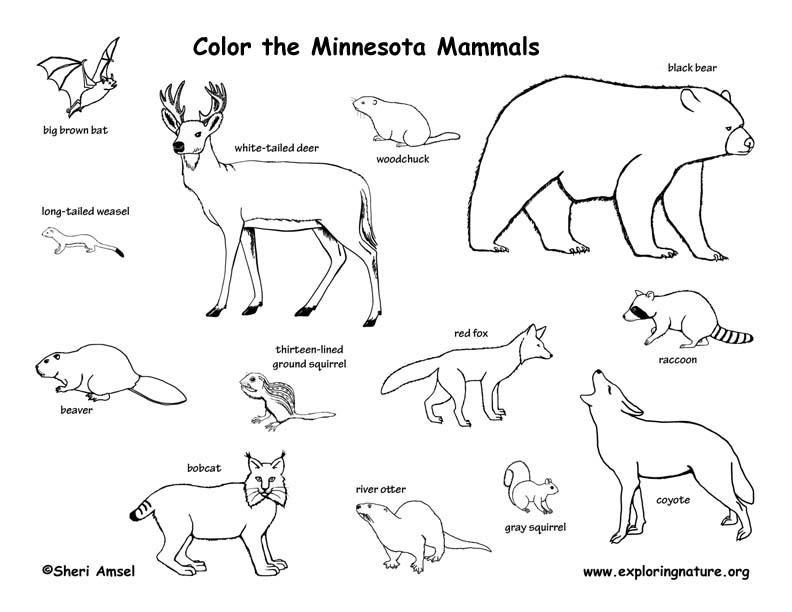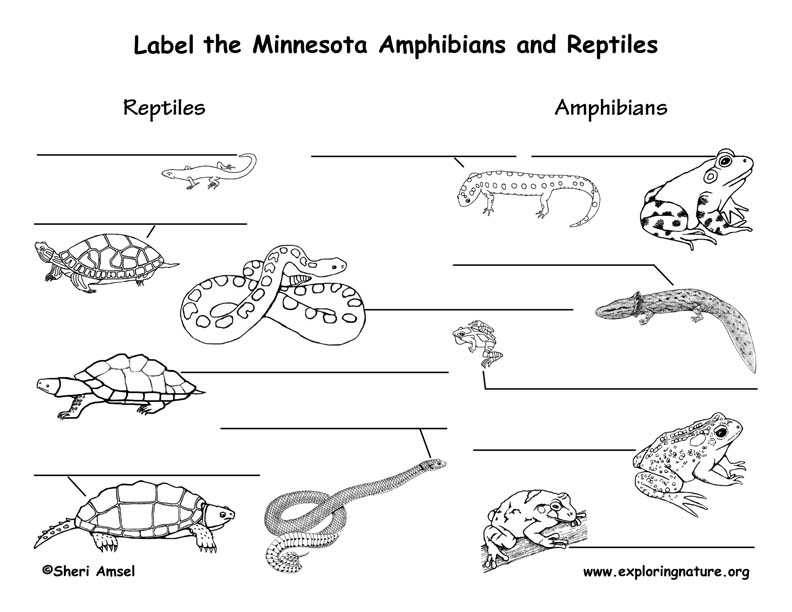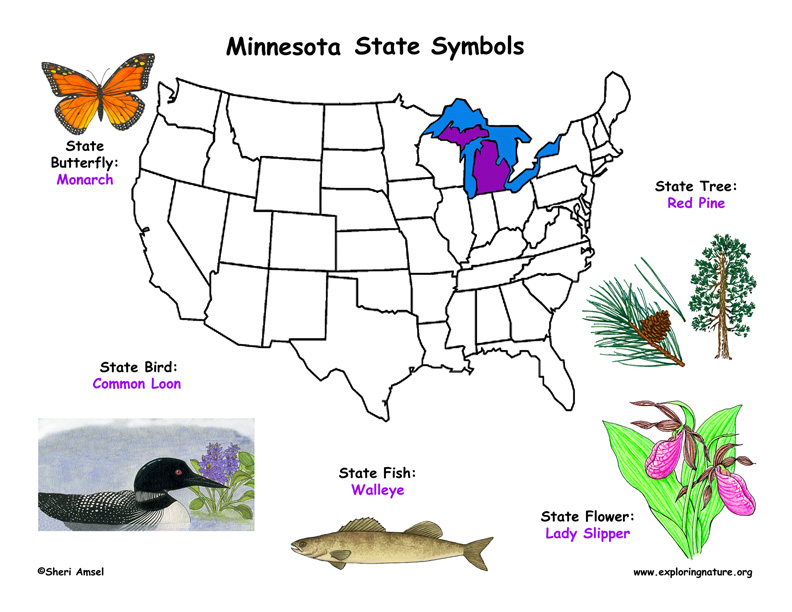

Minnesota is a large and varied state with forests, prairies, wetlands, rivers, and lakes – including Lake Superior.
Forest
About 32% of Minnesota is covered in forest - about 16.3 million acres. If you ran a diagonal line down the center of the state from the northwest corner to the southeast corner, the land to the east of the line would be forested and the land to the west would be prairie.
The farthest northeastern part of the state has more coniferous forest – also known as boreal forest. There are lowland conifer forests of black spruce, tamarack, or white cedar. They are found in the floodplains along lakes and streams and in among bogs and peatland habitats. Upland coniferous forests have pine, spruce, balsam fir and white cedar with some hardwoods like quaking aspen, paper birch, oaks, and red maple mixed in.
Deciduous forest makes up a central band of from north to south and is made up of lowland hardwood, northern hardwood, oak, paper-birch, aspen-birch, aspen, and maple-basswood forest. Lowland deciduous forests have silver maple, black willow, and cottonwood. Another form of lowland deciduous forest is found in low areas along the margins of lakes, rivers, and peatlands and is called hardwood swamp forest. This forest is dominated by black ash.
There are also upland hardwood forests of aspen, oak and a mixture of sugar maple, basswood, and red oak, and elm and ashes. Since European settlement in Minnesota, much of the upland deciduous hardwood forest has been lost to development and timber harvesting. Yet, where the upland hardwoods have decreased, the aspen forests have actually increased and are now the most abundant forest habitat in Minnesota.
Wetlands
Minnesota has many kinds of wetlands. Minnesota's bogs and fens are mostly located in the boreal forests of northern Minnesota, but fens are also found on Minnesota's prairie. Bogs form when ponds and glacial kettle lakes fill in with decaying plants. It can form a mat around the open water or fill in completely forming a spongy mat of peat covered by sphagnum moss. The acidic environment (where there is little oxygen and nutrients) creates very slow decomposition of plant matter. For plants to survive in a bog, they must be acid tolerant like orchids, sundews, pitcher plants, labrador tea, tamarack, and black spruce.
Fens differ from bogs in that they are found over calcareous soils so are alkaline instead of acid. They are often in or near prairie habitats and have enough nutrients to support a rich diversity of plants. Most fens are treeless, but they may be covered by shrubs. The most common plant types in fens include reeds, sedges and grasses.
Grassland
Before the European settlers came, Minnesota had more than 18-million-acres of prairie. Minnesota's prairie was part of the North American Prairie system stretching from Canada to Mexico from the Rockies to Indiana. Because the land was fertile, it was eagerly plowed under for farms and developed into towns and cities. Today, less than 1% of Minnesota's native prairie is left.
Amphibians
Reptiles
For more information about specific birds and an illustrated diagram, check our bird database.
When you research information you must cite the reference. Citing for websites is different from citing from books, magazines and periodicals. The style of citing shown here is from the MLA Style Citations (Modern Language Association).
When citing a WEBSITE the general format is as follows.
Author Last Name, First Name(s). "Title: Subtitle of Part of Web Page, if appropriate." Title: Subtitle: Section of Page if appropriate. Sponsoring/Publishing Agency, If Given. Additional significant descriptive information. Date of Electronic Publication or other Date, such as Last Updated. Day Month Year of access < URL >.
Amsel, Sheri. "Minnesota Habitats, Mammals, Birds, Amphibians, Reptiles" Exploring Nature Educational Resource ©2005-2024. December 13, 2024
< http://www.exploringnature.org/db/view/Minnesota-Habitats-Mammals-Birds-Amphibians-Reptiles >








